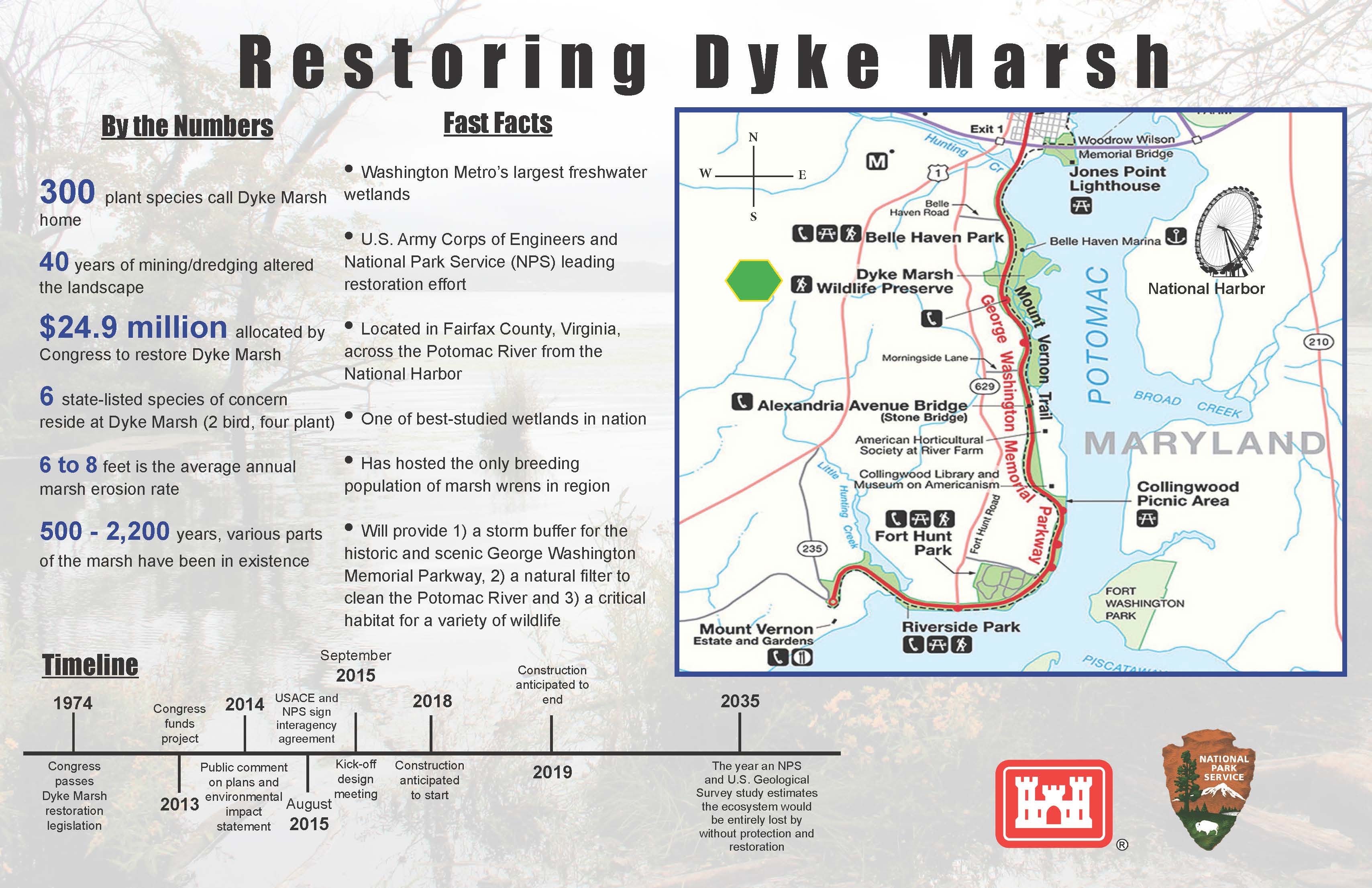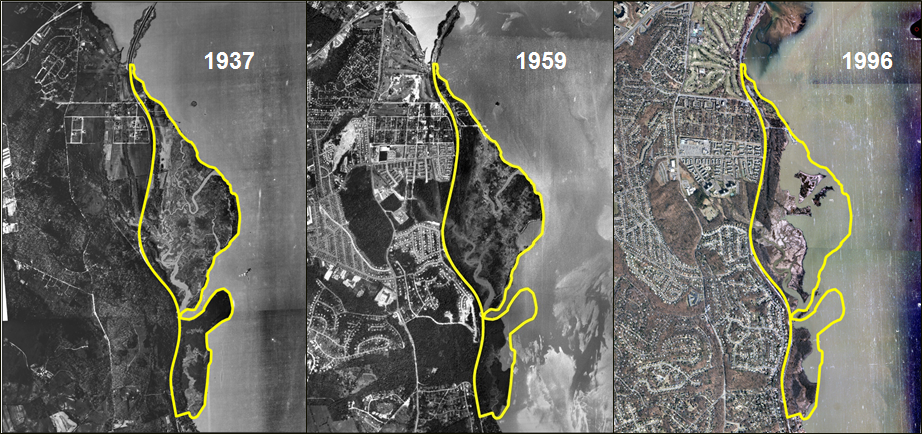
*Click to enlarge
The Baltimore District and the National Park Service (NPS), George Washington Memorial Parkway, are working on a project to protect and restore freshwater tidal marsh within the Dyke Marsh Wildlife Preserve in Fairfax County, Virginia, which is just across the Potomac River from the National Harbor. This is an NPS-funded project that the Corps is authorized to design and construct. NPS is providing funding to the Corps through the Hurricane Sandy Mitigation Program.
U.S. Geological Survey (USGS) estimates that the southern marsh has existed for approximately 2,200 years, and the northern marsh has existed for 500 years.
Dyke Marsh is viewed as a national treasure that holds extensive value not only for plants and animals, but for its recreational, educational and cultural purposes. It is one of the best studied wetlands in the U.S. and is the largest remaining freshwater, tidal wetlands in the Washington metropolitan area. It is home to six state-listed species of special concern (two bird species and four plants species) and has the only known nesting population of marsh wrens in the Upper Potomac River tidal zone.
From 1940 to 1972, approximately 270 acres of marsh were dredged by a corporation for the valuable sand and gravel beds that laid in a thick layer 16 to 40 feet below Dyke Marsh. In the 1950s, the promontory south of Hog Island Gut was removed due to dredging.
Dyke Marsh is now exposed to storm waves, susceptible to erosion, and unable to sustain itself.

In 2009, NPS partnered with USGS to investigate the state of Dyke Marsh. USGS found that the post-mined marsh is rapidly shrinking as a result of erosion caused primarily by storm waves driven northward up the Potomac River. Erosion in the marsh averages between 6 and 8 feet per year. USGS found that without intervention, this unique ecosystem would be entirely lost by 2035.
In 2013, Congress recognized Dyke Marsh as an invaluable resource to the District of Columbia region and allocated $24.9 million to restore the site. In 2014, an Environmental Impact Statement and preliminary plans were released by NPS for public comment. In August 2015, NPS and the Corps signed an interagency agreement to start the project. The Record of Decision for the project was signed in June 2016.
This project is critical to the ecology of the Potomac through the protection and restoration of valuable, historic tidal wetlands and habitat.
With the available project funding, work includes an approximately 1,800-foot breakwater and construction of a stone sill to prevent erosion.
This design has been set up to allow for expandability. Remaining construction work that cannot be completed could be identified as future phases of the project to be constructed as more NPS funding becomes available.
The breakwater will help protect the existing marsh from erosion and will help re-establish the marsh’s ability to regenerate naturally.
This project will provide a storm buffer for the historic and scenic George Washington Memorial Parkway, a natural filter to clean the Potomac River, and habitat for a variety of plants and wildlife.